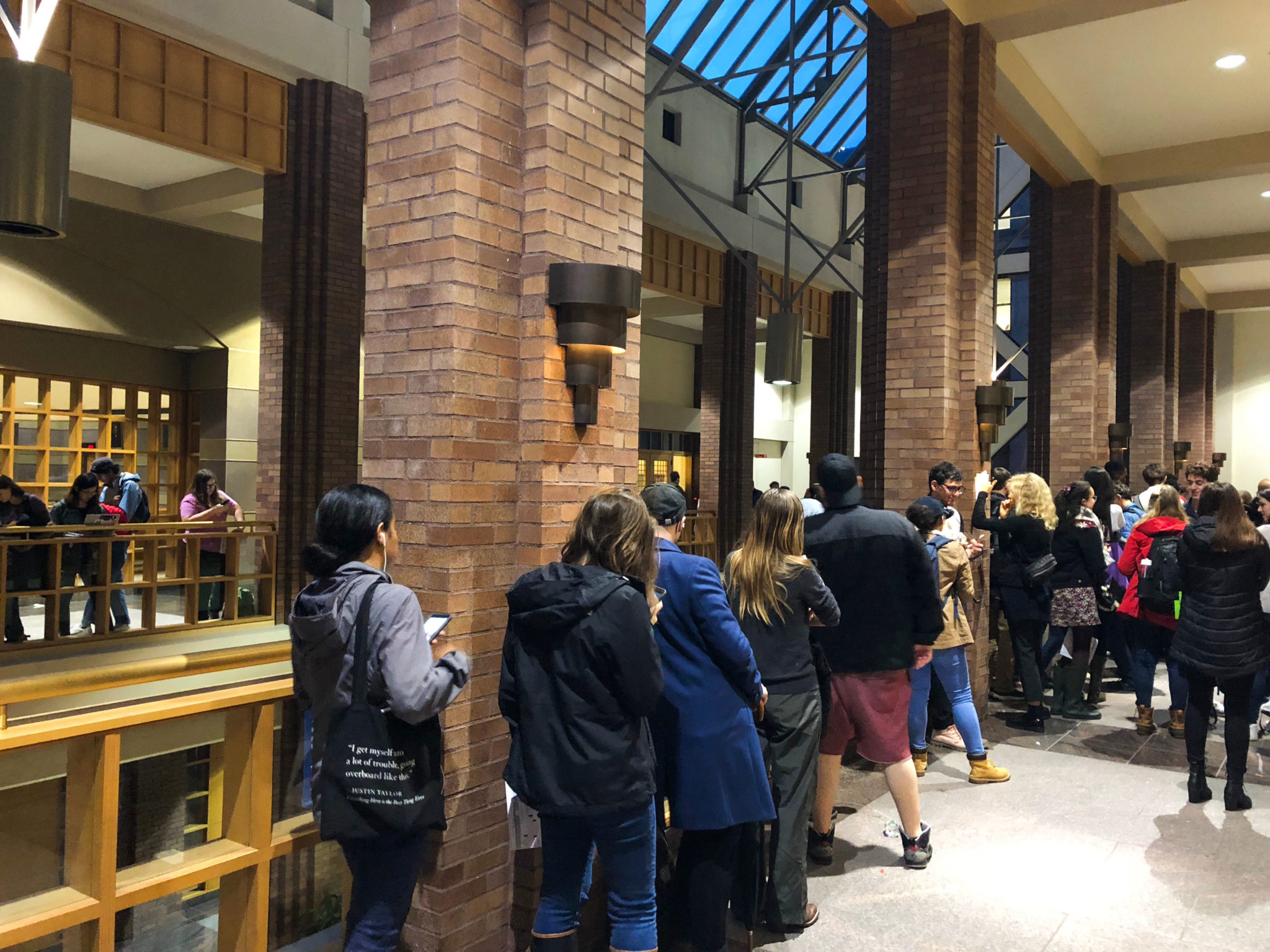
After launching the first pledge-to-vote competition between rivals Harvard and Yale, both colleges’ respective undergraduate political engagement coalitions — Yale Votes and Harvard Votes — agree that the initiative’s efforts to increase voter engagement in last week’s midterm elections were a success.
But ultimately, the Crimson trumped the Bulldogs in the competition to garner the highest percentage of undergraduate pledges to vote.
With the completion of the nationwide midterm elections, both groups counted the number of pledges to vote, which they tracked through the website, National Pledge to Vote. Of Yale’s undergraduate population, 17.8 percent submitted a pledge, while Harvard garnered commitments from 22.7 percent of its own undergraduates. While both campuses await a National Student Learning, Voting and Engagement campus report that will more thoroughly analyze voter turnout on each campus, both groups were satisfied with campus engagement.
“I am confident that civic engagement at this university is thriving,” said Jordan Cozby ’20, Yale Votes co-founder and Yale College Democrats president.
Yale Votes — a coalition of student groups aimed at increasing political engagement and voter turnout — announced the competition on Oct. 9. The coalition hosted a kickoff event the Friday after the announcement featuring free food, voter registration and pledge-to-vote tabling. Since then, they continued various outreach efforts, including canvassing outside of student performances, leading up to the November elections.
On election day, the group began pasting posters early in the morning with information about polling hours and “Parties at the Polls” — a gathering with Popeyes, music and free donuts on Old Campus and at the Wexler-Grant Community School. The event was designed to “celebrate voting” and “share information and address voting questions,” according to Harold Ekeh ’19, president of the Yale chapter of the national voter engagement organization Every Vote Counts and a co-founder of Yale Votes.
According to Ekeh, the idea for the challenge grew from results of experiments conducted by Dartmouth College and the Environmental Defense Fund. The study found that pledges to vote increased voter turnout by 3.7 points for all subjects and 5.6 points for people who had never voted. Ekeh found this data over the summer and assisted in the launch of the initiative with their Harvard counterpart. He said the challenge’s successes resulted from a mix of “social pressure and awareness,” the latter of which came in part from increased campus efforts to disseminate information regarding absentee ballots and Election Day voter registration.
“I think we definitely helped get [political] energy so high,” Cozby said about Yale’s political campus culture.
When it comes to conversations about voting on campus, Cozby said that oftentimes students talk into their own “echo chambers.” However, Cozby believes that Yale Votes effectively harnessed these conversations across broad sectors of campus and mobilized them towards higher political engagement in these midterm elections.
“[Political involvement] is and was super important,” Cozby said.
Teddy Landis, a Harvard undergraduate and co-chair of the Harvard Votes Challenge, shared similar optimism about the outcomes of the competition and what the group perceived as an increase in student engagement.
“I’m really proud of the work our team has done. Student volunteers from across the College worked day in and day out to create a culture of voting on our campus. All around you’d see voting posters and stickers and students talking about the election. We wanted to shift culture and by that metric, I think we were successful,” he said.
Regardless of the results of this interuniversity competition, the culture and conversations around voting on Yale’s campus and beyond have changed. Between the 2012 and 2016 presidential elections, student voter participation nationwide increased from 32.7 percent to 56.7 percent according to a report from the National Study of Learning, Voting and Engagement. Additionally, within New Haven, the number of registered voters in the 18–24 age bracket has nearly doubled since the 2016 presidential election, as of early September.
Cozby said that in previous elections, his work to get people out to vote has felt similar to “pulling out teeth.” However, in this election, he said that he rarely came across overt political apathy or dissent and said that “it was really exciting just seeing people actually care.”
“At the end of the day, what matters is how many ballots end up being cast,” Cozby said. “Pledges are immaterial.”
In 2018, 972 Yale students pledged to vote.
Allison Park | allison.park@yale.edu
Carly Wanna | carly.wanna@yale.edu







